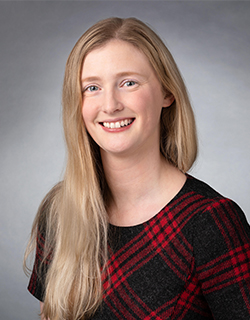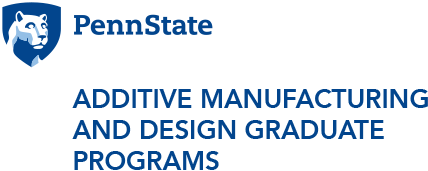AMD 596 Master’s Projects
Below are featured Master’s of Engineering in Additive Manufacturing and Design student scholarly paper topics. If you would like to be featured, please contact amdprogram@psu.edu. We would love the opportunity to highlight your master’s project.
|
|
|

|
Sarah Rimini
Adviser: Catherine Berdanier
Scholarly Paper Title: Leveraging 3D Printing and Silicone Casting to Create Realistic X-Ray Phantoms for Radiography Student Education
Brief Synopsis: This paper presents the design and development of a realistic face/skull phantom using 3D printing and silicone molding/casting, segmented from a real patient's CT scan, that is anatomically correct. This model was then used to educate radiography students in skull positioning and exposure techniques. Using the model to take actual x-ray exposures, the students were able to see real-time feedback and results on their positioning work instead of the conventional way of simulating with their peers where they do not take x-ray exposures and have no way of knowing if it was truly done correctly.
|
|

|
Zach Pitts
Adviser: Sanjay Joshi
Scholarly Paper Title: Evaluating the use of a graded downskin exposure strategy with Inconel 718 in metal laser powderbed fusion
Brief Synopsis: This study evaluates the performance of gradually increasing the laser energy applied in downward facing surfaces on parts manufactured via laser powderbed fusion. This evaluation was done with Inconel 718 on an EOS M290 and 150 unique parameters which were tested and assessed for shallow surface buildability, surface roughness, and sub-surface porosity. The results of this study yielded improved performance with the graded downskin exposure strategy, but this same level of improvement was also achieved via conventional parameter changes. These conventional changes utilized a new strategy for building shallow surfaces with high energy downskin exposures, enabling improved part performance that is achievable on any laser powderbed fusion machines.
|
|

|
Stephen Prichard
Adviser: Allison Beese
Scholarly Paper Title: Investigation of Structure Process Property Relationship for 17-4PH Stainless Steel in the Bound Metal Deposition Process
Brief Synopsis: Bound Metal Deposition (BMD) is a new metal additive manufacturing method with significantly lower capital costs and a more office-friendly system when compared to other metal AM technologies. Although there has been some commercial success, there has been limited research into the mechanical properties that can be expected from this process, and how this unique fabrication method may affect the structure (both on the micro and macro level) in the final parts. The primary focus of this research is to explore the X, Y, and Z mechanical properties to identify an anisotropy of 17-4 PH stainless steel made by BMD.
|
|

|
Brianna Duncan
Adviser: Allison Beese
Scholarly Paper Title: Functionally Graded Materials: An Overview of Testing and Modeling
Brief Synopsis: Functionally Graded Materials (FGMs) provide unique properties often unachievable through traditional material development. However, there are many challenges around the development, characterization, and modeling of FGMs. This literature review discusses characterization and modeling techniques utilized by researchers working on metallic FGMs fabricated via Directed Energy Deposition (DED) Additive Manufacturing (AM). Each technique is summarized, the capabilities and limitations are described, and some areas of future work are presented.
|
|

|
Jim Urban
Adviser: Benjamin Lear
Scholarly Paper Title: Evaluation of Material Jetting: Effects of Varied Process Parameters and Part Aging over Time
Brief Synopsis: Material Jetting has proven to have distinct advantages in speed and quality over other plastic additive manufacturing (AM) processes such as Fused Deposition Modeling (FDM) and Stereolithography. For material jetting to be validated for final part production, however, part performance over time must be evaluated. This study examined two different material-jet materials through tensile tests conducted over a ten-week time interval, with strength and ductility measurements analyzed. Additionally, process variables of layer thickness and print orientation were varied; these varied factor levels setup a design-of-experiment (DOE), with their effects then determined from statistical analysis. Geometric features were also measured for dimensional accuracy, with DOE results analyzed to evaluate materials and process variables and their interactions.
|







